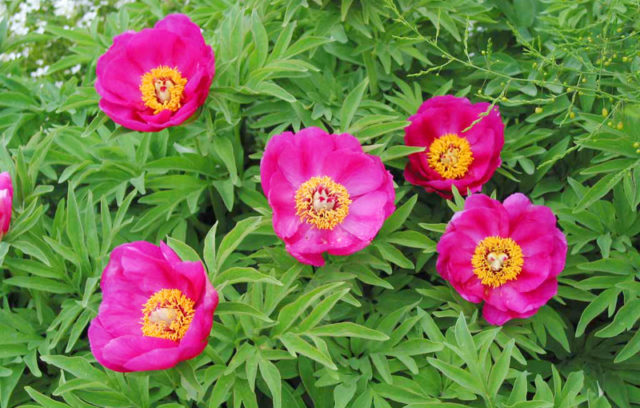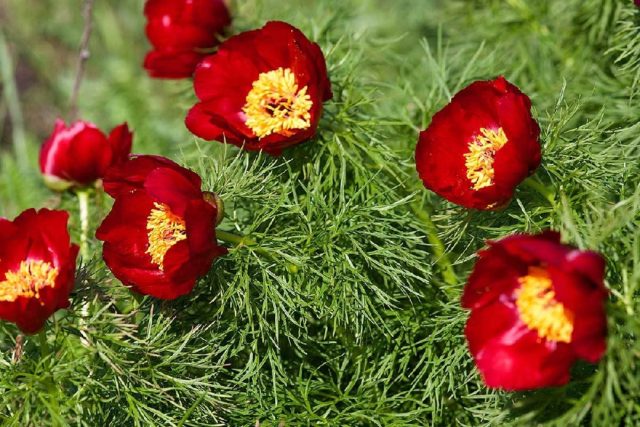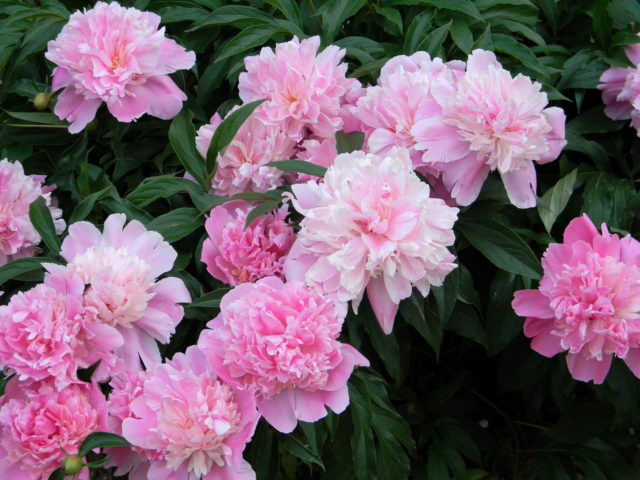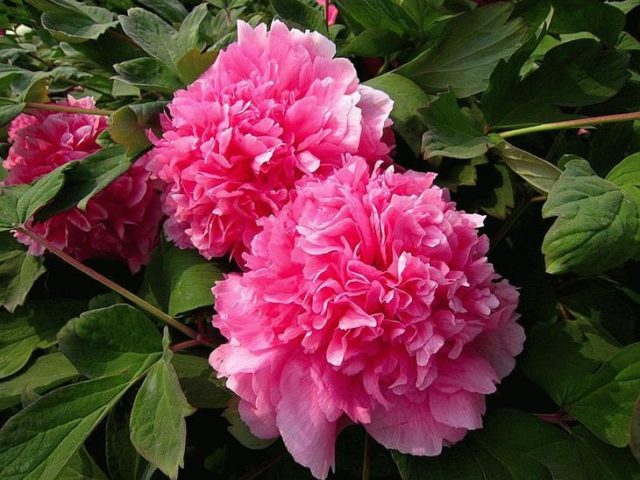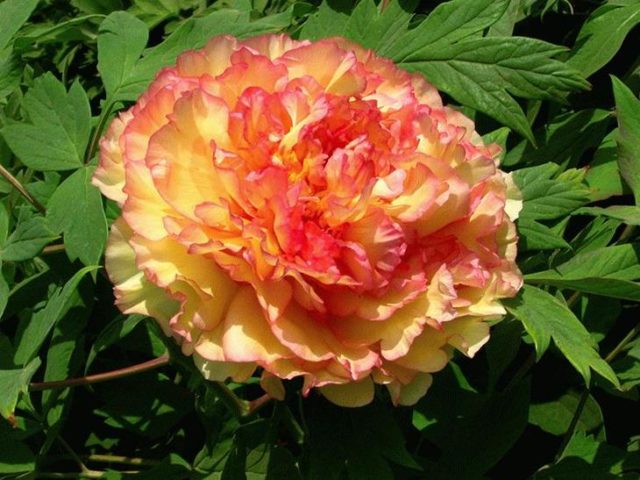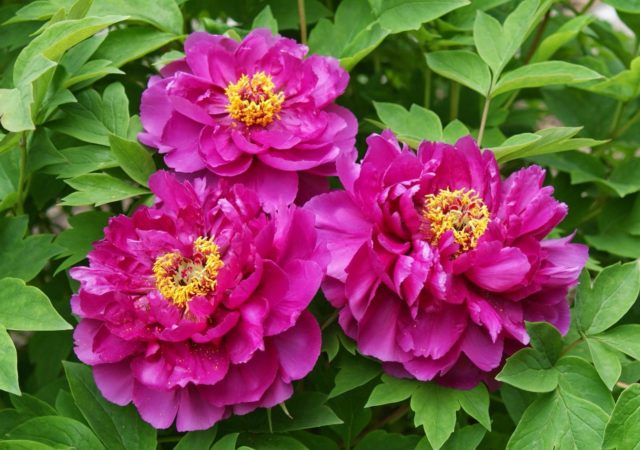Content
- 1 What is the difference between tree peonies and herbaceous ones according to the description
- 2 Herbaceous and tree peonies: the difference in flowering
- 3 Herbaceous and tree peony: differences in care
- 4 Differences between varieties of herbaceous and tree-like peonies
- 5 How to distinguish a tree peony from a herbaceous
- 6 Conclusion
The difference between a tree peony and a herbaceous one lies in the appearance and size of the crown, the diameter of the flower, the care and preparation of the plant for winter. You can even determine the species from the photo, carefully examining the stems, leaves and color of the buds. The method of planting, the duration and period of flowering depends on the type of plant. That is why, when organizing a flower arrangement in the garden, it is so important to know exactly the type of peony.
What is the difference between tree peonies and herbaceous ones according to the description
The Peony group is represented by a wide assortment of perennial garden plants that differ in appearance, flowering time and care features:
- The height of the bush and crown. Herbaceous peonies can reach 80–120 cm in height. Their crown is spreading, but not stable. The stems are green, fleshy. Treelike shrubs grow up to 150–250 cm. The crown can reach 1.5 m in diameter, keeps its shape well, does not disintegrate even under the weight of the buds. Stems are stiff and stable.
- Growth features. Perennials grow rapidly, building up a lush green mass over the summer. By winter, the aboveground part dies off. In spring, young shoots begin to break through immediately after the snow melts, they are not afraid of frost. Tree peonies grow more slowly, reaching their maximum size in a few years. Branches do not die off for the winter, but shed their foliage. In the spring, young buds and shoots are formed on them.
- Life Span. Shrub peonies can grow in the garden in one place for up to 100 years. Other varieties require transplantation and separation once every 5–8 years.

Tree and herbaceous peonies look great in single and group plantings
Herbaceous and tree peonies: the difference in flowering
The difference between a tree peony and a herbaceous one can be seen in the photo, where the trunk and crown of the plant will be clearly visible. It is difficult to determine belonging to a specific group only by the type of flowers and buds.
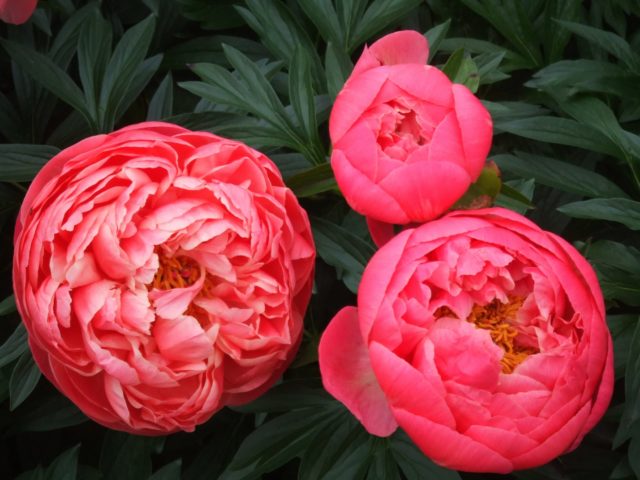
Herbaceous peonies begin to bloom from the first year after planting seedlings in open ground, tree peonies - after 2-3 years
The difference in bloom is negligible:
- The buds of treelike shrubs are larger, up to 20–25 cm in diameter. The open flowers of herbaceous perennials reach 15–17 cm.
- All species can have double, semi-double or simple flowers. But the shape is different: peonies with green stems form large single balls of the correct size. Flowers of tree-like shrubs are more elongated, goblet.
- The petals of herbaceous perennials are paler. Treelike - surprise with brightness and a combination of several shades in one bud.
Herbaceous and tree peony: differences in care
All plants, regardless of the type, require attention and proper care throughout the growing season.
General principles of planting and growing:
- Any peony needs a nutritious, well-drained soil. Flowers do not tolerate stagnant moisture.
- All plants prefer free space.
- All species need regular summer watering.
- Peonies do not tolerate the neighborhood with weeds.
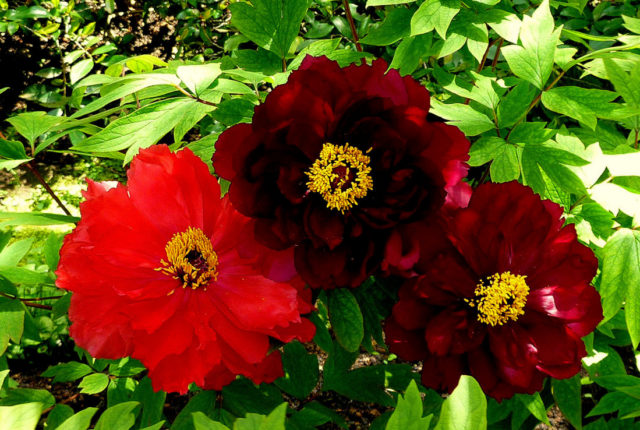
The tree peony sheds only leaves in the fall, but the branches remain
Differences in care are due to the peculiarities of the development of the root system, the duration of the growing season and the structure of the stems:
- Herbaceous varieties need slightly acidic or neutral soil, tree-like ones - slightly alkaline.
- Shrub peonies are more demanding on the composition of the soil mixture: humus, sand, garden soil, lime, superphosphate and a significant drainage layer (at least 20 cm) are needed. For other species, garden soil and peat are sufficient, as well as drainage 10 cm deep.
- The root collar of the tree seedling should be at the level of the ground when planting, the green collar should be buried 3-5 cm.
- The buds of herbaceous peonies must be removed for the first 2 years of growth in order for the plant to grow stronger. Shrub varieties begin to bloom when the seedling is fully ready for increased stress.
- Watering deciduous peonies should be stopped at the end of summer so as not to provoke shoot growth. Herbaceous plants additionally need late autumn feeding so that the plant has enough strength to survive the frosts.
- Shrub perennials carry out only sanitary pruning. The green stems are removed for the winter.
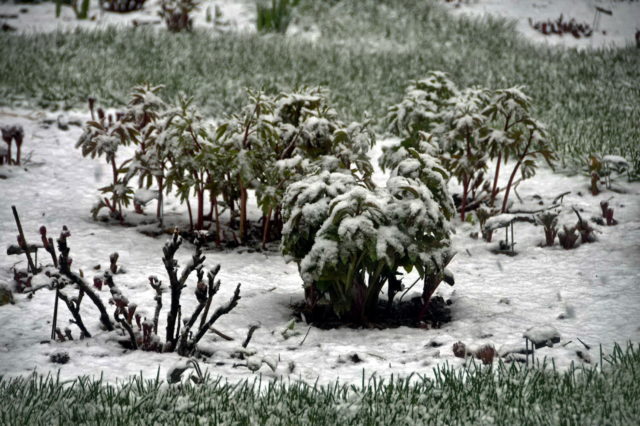
Herbaceous varieties are more frost-resistant, they do not need winter shelter
Differences between varieties of herbaceous and tree-like peonies
There are 4.5 thousand herbaceous and about 500 treelike varieties. At the same time, breeders are constantly creating new varieties, as well as forming hybrids that combine the best properties of mother plants.
According to the generally accepted classification, there are 5 types of herbaceous peonies:
- Evasive (or Maryin root) - differs in short stature, small sharp leaves, medium-sized (12-14 cm) flowers. Unpretentious, frost-resistant.
- Narrow-leaved - one of the first to bloom (early May). Best suited for solo planting. The buds are small (up to 8 cm in diameter), but they attract attention with their bright colors.
- Drug - rare, rarely used in landscape design.
- Lactobacillus Is the most popular variety. Unpretentious, has a wide variety of colors. Forms buds in early to mid-summer, blooms for 3-4 weeks.
- Peony Mlokosevich - a hybrid with bright yellow buds.
The birthplace of tree varieties is China, from where the plant spread throughout the world. Today the following groups are distinguished:
- Sino-European: classic varieties with double and semi-double, very large, heavy flowers of various colors. The bushes are tall (up to 1.9 m), spreading, but stable due to strong stems. Popular varieties: Green Ball, Transparent Dew, Blue Sapphire, Peach in the Snow, Red Giant, Purple Lotus.
- Japanese: plants with semi-double or simple light buds up to 17-22 cm in diameter. They are characterized by increased frost resistance and ease of growing. The main ones are Kinko, Shima-nishiki, Gold Placer, Black Panther.
- Delaway hybrids: short (up to 1 m) deciduous shrubs with bright red, burgundy, purple or chocolate non-double flowers.
How to distinguish a tree peony from a herbaceous
To find out whether a peony belongs to a group, it is necessary to compare the appearance of the crown, the height of the bush and the conditions of care.
Differences in the types of peonies:
Sign | Herbaceous varieties | Tree varieties |
Bush height | Up to 1.2 m | Up to 2-2.5 m |
Stems | Green, fleshy | Stiffened |
Crown | Sprawling, disintegrates under the weight of buds, dies off at the first frost | Resistant, does not disappear for the winter, sheds leaves |
Buds | Terry, semi-double, simple, up to 17 cm in diameter | Large inflorescences up to 25 cm. They are distinguished by brighter colors |
Flowering period | From early spring to early June | May, June, early July |
First bloom | From 1 year after planting a seedling | For 2-3 years |
Pruning | Held annually in the fall | Only in case of disease or pest infestation |
Life span | It is necessary to transplant and divide the bush every 5-8 years | Grow in one place for up to 100 years |
Conclusion
The main difference between a tree peony and a herbaceous one is in the appearance of the stems, the height of the bush and the diameter of the inflorescences. In addition, shrub varieties do not require transplanting and pruning, they bloom earlier. Herbaceous are more common. Even a novice gardener can handle their cultivation.
